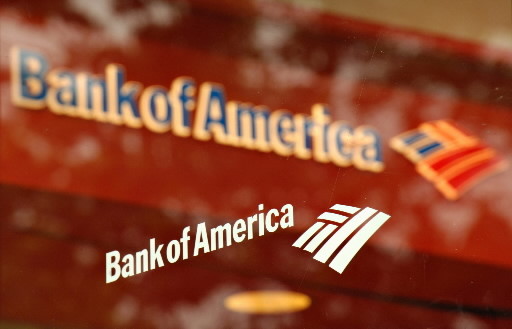
NEW YORK – Bank of America Corp., Wells Fargo & Co. and American Express Co. boosted payouts to investors after passing U.S. tests of their financial health as banks push to regain luster lost since the 2008 credit crisis.
JPMorgan Chase & Co., Citigroup Inc. and Capital One Financial Corp. also were among lenders that said they’ll boost quarterly dividends or expand stock buybacks minutes after the Federal Reserve approved capital plans yesterday for 16 of the 18 largest U.S. banks. The buybacks total more than $20 billion while the dividend increases amount to more than $3.5 billion on an annual basis, data compiled by Bloomberg show.
Lenders are still struggling to restore their stock prices and dividends to pre-crisis levels, even as the Dow Jones Industrial Average eclipses record highs. The KBW Bank Index of 24 U.S. lenders is about 50 percent below its value in March 2007, while the Dow benchmark has returned about 40 percent including dividends.
“Wells Fargo was clearly a winner and U.S. Bancorp had a nice increase,” said Matt McCormick, who helps oversee $7.7 billion as a money manager at Cincinnati-based Bahl & Gaynor Investment Counsel Inc. “When you look at the banks, I like seeing dividend increases. That’s a much better indicator of health than the buybacks.”
Capital plans are proposals by banks to disburse dividends and repurchase shares, payouts that were curtailed during the financial crisis.
‘Qualitative assessment’
Ally Financial Inc., the auto lender majority-owned by U.S. taxpayers, and Winston-Salem, N.C.-based BB&T Corp. had their capital plans rejected by the Fed. BB&T’s sparked an objection based on a “qualitative assessment,” and the firm must resubmit a proposal after addressing unspecified issues the Fed identified.
While JPMorgan and Goldman Sachs Group Inc. received approval for their capital plans, the New York-based firms must submit new capital plans by the end of the third quarter to address weaknesses in their planning processes. The deficiencies found at the two banks related to projections of losses and revenue, according to a Fed official.
Regulators intent on preventing a repeat of the 2008 financial crisis have run annual stress tests on the biggest banks to see how they might weather an economic shock. The Fed last week disclosed how the 18 largest lenders performed in a hypothetical recession in which U.S. unemployment peaks at 12.1 percent, home prices fall 21 percent and stocks plunge 52 percent. Goldman Sachs fell 1.7 percent after those results through yesterday, the second-worst performance among firms reviewed. JPMorgan rose 0.7 percent.
Boosting payouts
Yesterday’s test required the firms to submit plans for managing their capital. The central bank then gauged how strong each bank would be with the funds that remained.
For the first time, companies were allowed to revise those plans and immediately resubmit a new proposal for approval. The option came after Citigroup and SunTrust Banks Inc. had their capital plans rejected last year.
JPMorgan, the biggest U.S. bank by assets, raised its quarterly dividend to 38 cents from 30 cents and said it intends to repurchase $6 billion of its stock within 12 months. Bank of America, the second-largest lender, left its payout unchanged while saying it may buy back as much as $5 billion of its shares and redeem $5.5 billion of preferred securities.
Wells Fargo, the biggest U.S. home lender, increased its quarterly dividend to 30 cents a share from 25 cents and said it would buy back more stock than last year, without elaborating.
Bank of America and Wells Fargo “are the clear winners versus expectations,” Ed Najarian, an analyst at International Strategy & Investment Group Inc., said in a research note, predicting Bank of America would rise the most in trading today.
Financial firms were forced to cut dividends to token amounts during the crisis after taking U.S. bailouts to prevent them from collapsing. The move dealt a blow to pension funds and retirees who depended on banks for a combination of capital growth and income from the shares, which had been among the higher-yielding equities.
The 18 banks tested by the Fed paid out 19 percent of net income in common dividends last year, half the level that prevailed before the crisis in 2006, the central bank said yesterday.
‘Still risk’
“There is improvement and there is not the perception of risk among these banks as there used to be,” McCormick said. “I am trying to tell people this is a not a sign that all is well. There is still risk there. Capital ratios alone do not equal health.”
American Express, the biggest U.S. credit-card issuer by customer spending, raised its quarterly dividend by 3 cents to 23 cents and said it would repurchase as much as $4.2 billion of its shares. That came after the Fed rejected AmEx’s initial plan to buy back $5.7 billion of stock.
Citigroup, the third-biggest lender, said it will repurchase as much as $1.2 billion of shares, without changing its 1-cent quarterly dividend. Minneapolis-based U.S. Bancorp increased its payout to 23 cents and said it was approved to repurchase $2.25 billion of shares.
Capital One, the lender that gets more than half its revenue from credit cards, said its dividend will rise sixfold to 30 cents. Regions Financial Corp. tripled its quarterly payout to 3 cents and said it plans to repurchase as much as $350 million of its shares and redeem $500 million of preferred stock.
Custody banks
Bank of New York Mellon Corp., the world’s biggest custody bank, and State Street Corp., the third largest, announced buybacks of $1.35 billion and $2.1 billion, respectively, with Bank of New York also increasing its quarterly dividend by 2 cents a share to 15 cents.
SunTrust doubled its payout to 10 cents and may repurchase as much as $200 million of its stock, the Atlanta-based lender said in a statement. Morgan Stanley said it will buy the remaining 35 percent of its brokerage venture from Citigroup. Goldman Sachs didn’t disclose its capital plans after saying in a statement that it passed the test.
Fifth Third Bancorp, Ohio’s largest lender, said it may increase its dividend, repurchase trust-preferred shares and common stock, and convert other preferreds. KeyCorp, Ohio’s second-biggest bank, received approval to buy back $426 million of its stock and raise the quarterly dividend by 10 percent to 5.5 cents. PNC Financial Services Group Inc. said it may increase its dividend, without saying by how much.
U.S. banks have grown stronger since the crisis. The Fed said in November the largest banking groups had almost doubled their Tier 1 common capital — a key measure of a bank’s cushion against losses — to $803 billion in the second quarter of last year from $420 billion in the first quarter of 2009.
JPMorgan CEO Jamie Dimon, 57, said last month that banks are accumulating more capital than they need, and Warren Buffett, the 82-year-old billionaire investor who oversees stakes in some of the largest U.S. banks, said the nation’s lenders have rebuilt capital to the point where they no longer pose a threat to the economy.
“The banks will not get this country in trouble, I guarantee it,” Buffett, chairman and CEO of Omaha, Neb.- based Berkshire Hathaway Inc., said in a January phone interview. “The capital ratios are huge, the excesses on the asset side have been largely cleared out.”
Still, some of the largest lenders haven’t reached capital ratio requirements under new rules set by the Basel Committee on Banking Supervision, which may have caused them to be cautious in their requests, said Richard Staite, a London-based analyst at Atlantic Equities LLP.
“Capital return including buybacks will be capped by an increased emphasis on meeting the full Basel III capital requirements by year-end,” Staite wrote in a note to investors before the announcement. “Valuations are now higher and buyback requests likely to be more measured.”












